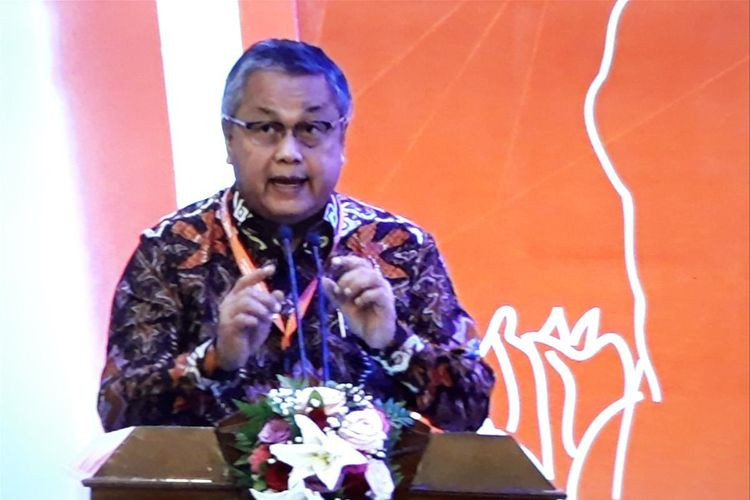Popular Reads
Top Results
Can't find what you're looking for?
View all search resultsPopular Reads
Top Results
Can't find what you're looking for?
View all search resultsBI sees signs of slowing capital outflow as stimulus packages calm markets
“The government absorbed Rp 22.2 trillion from the Rp 15 trillion indicative target from the auction because it received total bids of Rp 35.5 trillion,” Perry said during a video conference with the media.
Change text size
Gift Premium Articles
to Anyone
F
oreign investors are slowly coming back to Indonesia as Bank Indonesia (BI) is seeing signs of an easing of the recent capital outflow from the country.
BI Governor Perry Warjiyo said on Tuesday that the central bank recorded a total Rp 145.1 trillion (US$8.7 billion) of capital outflow throughout the first three months of this year. The figure consisted of a Rp 131.1 trillion outflow from government bonds and Rp 9.9 trillion from the stock market.
The figure was much lower than the outflow BI recorded during the height of the coronavirus outbreak from Jan. 20 to March 30 that reached Rp 167.9 trillion, consisting of Rp 153.4 trillion from the bond market and Rp 13.4 trillion from the stock market.
Although still recording an outflow, the central bank has started to see foreign investors coming back to the country with the volume of the outflow declining and the latest government bond auction oversubscribed.
“The government absorbed Rp 22.2 trillion from the Rp 15 trillion indicative target from the auction because it received total bids of Rp 35.5 trillion,” Perry said during a video conference with the media.
Perry attributed the easing outflow to the various economic stimulus packages and stabilization by the central bank.
“The measures successfully subdued panic in the market despite the high levels of uncertainty,” he said during a video conference with the media. BI has been stabilizing the markets through its "triple market intervention" measures, focusing on the foreign exchange spot market, domestic non-deliverable forward (DNDF) and secondary bond markets.
BI has bought a total of Rp 172.5 trillion worth of government bonds, including Rp 166.2 trillion from foreign investors in the secondary market. “We will always be in the market to maintain liquidity,” Perry said.
Although the rupiah has depreciated by 18.29 percent since the beginning of the year, Perry said the currency was moving in a good market mechanism and that exporters continued to supply foreign exchange to the market.
“We also encourage importers and global investors that need US dollars to enter the DNDF market to hedge their funds and the premium is relatively cheap,” he said.
As of 10.27 a.m., the rupiah traded at 16.402 per US dollar, down 0.57 percent.










